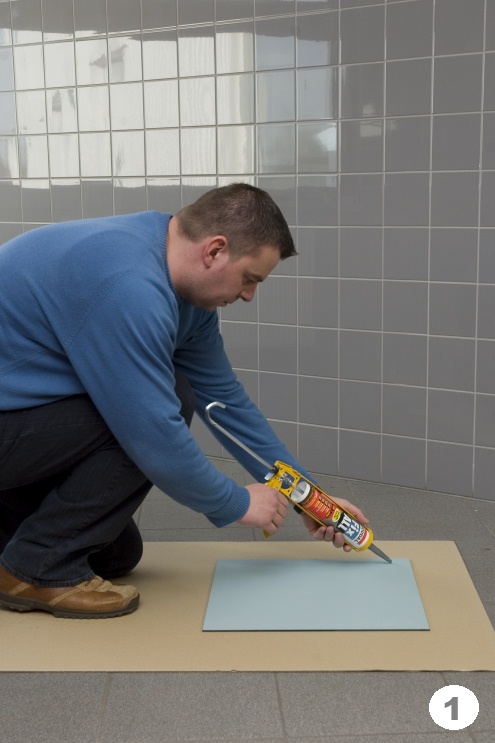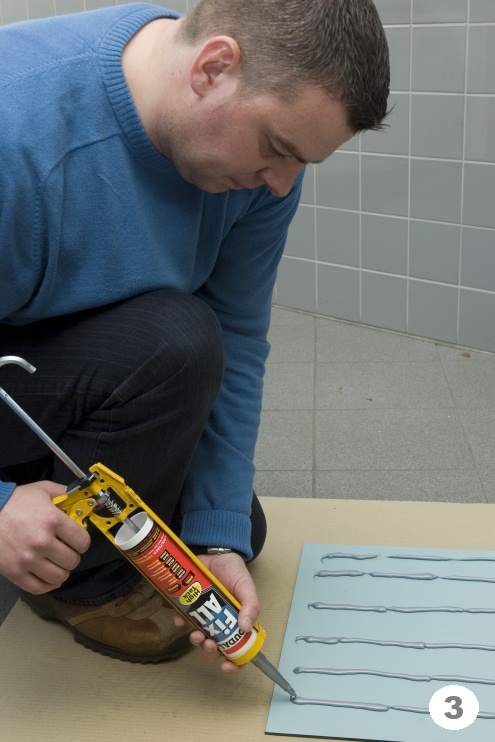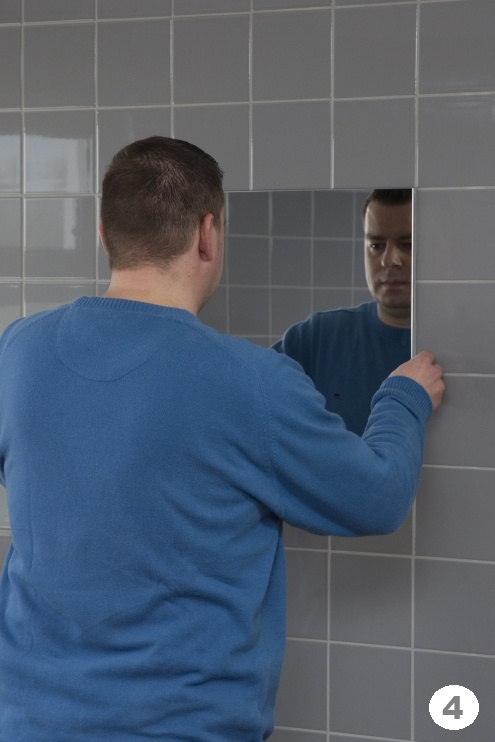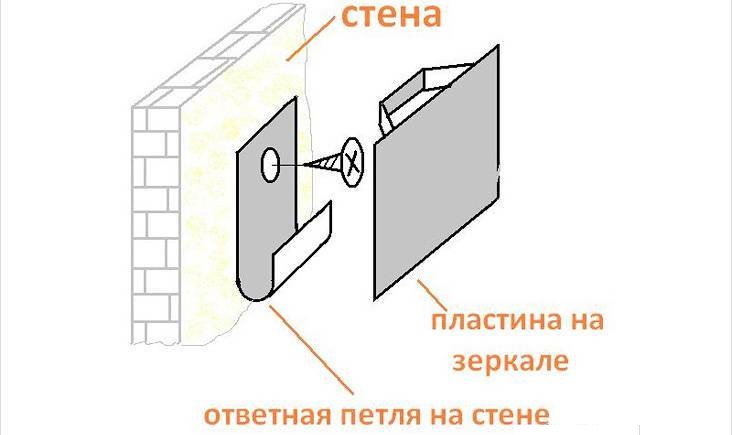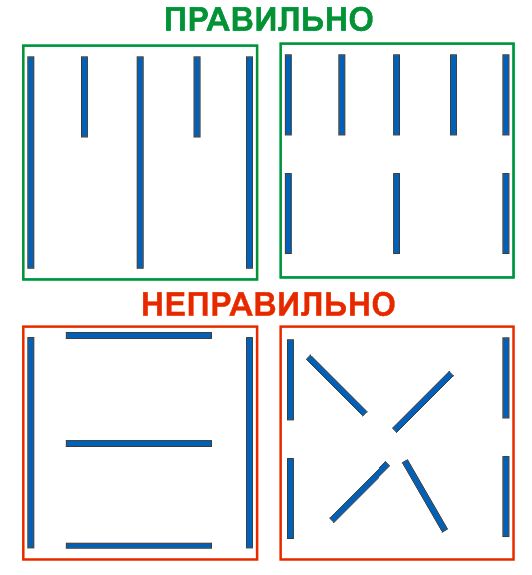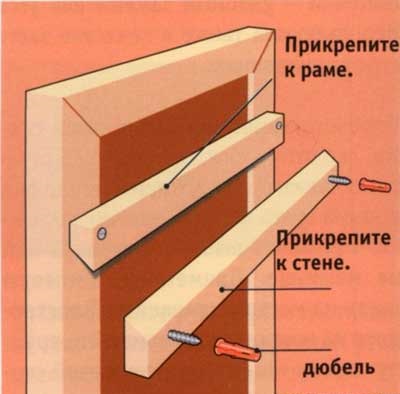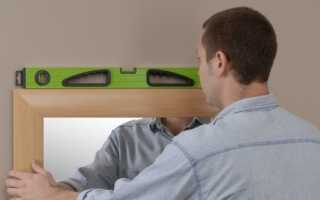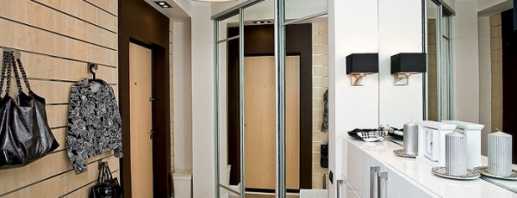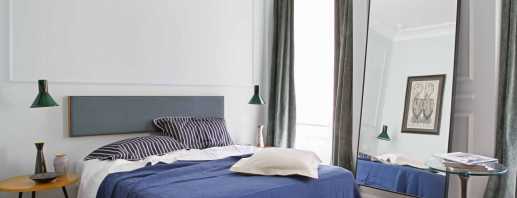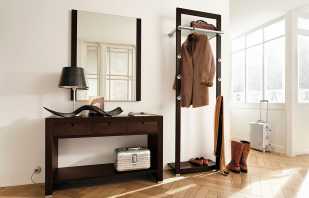Ways of mounting mirrors depending on the type of wall surface
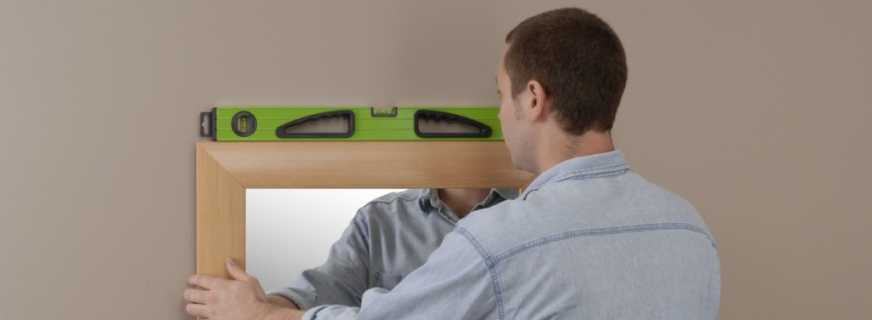
The mirror, which is based on glass, is a delicate and fragile material. Any inaccurate action with him can end in failure. Therefore, it is very important to think about the mount for the mirror on the wall - it should have increased strength and reliability. To do this, you need to know some features of the installation. The mounting method depends on the size of the canvas, the surface of the wall and the room temperature. Given all these nuances, you can easily fix the mirror without outside help.
Content
Features of fastening to different types of surfaces
In order to keep the mirror on the wall well, it is necessary to adhere to certain recommendations during installation. They differ depending on the wall material, accessories and tools used. The weight that a particular wall can support is also important. In each case, there are nuances that you need to know:
- Concrete. To drill a hole for a dowel in such a powerful base, it is impossible to do without a punch. When deciding to stick the product on a concrete or brick surface, it must first be covered with a primer, which will increase the adhesion of the mirror to the base.
- Drywall. The material does not have special strength, does not withstand heavy loads, so the weight of the mirror is limited to 20 kilograms. Holes are easily made with a screwdriver or drill. As fasteners used dowels, butterflies, as well as anchor bolts.
- PVC panels. They are mainly used in the bathroom. For heavy mirrors such a base is not suitable. Before installing the design, preliminary preparation is required. It consists in mounting the lathing on the wall, on which the canvas will be fixed.
- Tile. A mirror can be attached to such a surface in many ways. It is recommended to use drills on concrete, and even better on glass. When deepening into the wall itself, reliability increases significantly. There may be a difference in height between the tiles. So that it does not interfere, a layer of plaster should be applied to the tile, leveling the surface. Another option is to install a sheet of drywall.
The choice of mounting for the mirror on the wall depends on what material to fix it on.
How to attach yourself
When choosing a method of mounting the mirror to the wall, it should be borne in mind that on average, the weight of 1 square meter of the canvas is in the range from 7 to 15 kg. These indicators are important when choosing hardware or other restraint. The chosen method of installing the mirror on the wall should guarantee a secure fit, eliminating the possibility of falling. To fix the mirror without a frame with your own hands, use a bracket, glue, clamps, adhesive tape, glue, sealant.
With glue and sealant
For those who do not know how to choose a mount, this method is the best solution, since it does not require additional devices.
The glue used to fix the mirror to the wall without drilling should have an important characteristic - not to harm the amalgam (reflective layer) and provide a high degree of adhesion. You should not save - only a high-quality composition will reliably install even a large mirror that has significant weight.
When installed in the bathroom, the adhesive must have antifungal additives. This will prevent mold and mildew.
Before starting the process, degrease the surface of the wall. The next step is marking. How smoothly it is made is checked using the level. Of course, it is rather difficult to keep the canvas on the wall until the adhesive hardens. In this regard, backups should be prepared. For example, they can be planks or screws screwed into the bottom of the marking.
Before hanging the mirror, glue is applied to the wrong side with strips in 10 cm increments or dotted. Then the future detail of the interior should be leaned against the surface and pressed firmly. The backups are removed after a couple of days. In addition to glue, sealant is successfully used. Mounting the mirror in this way will ensure reliable long-term operation.
Glue and sealant provide hidden wall mount for the mirror, whose weight is about 8-10 kg.
Using holders
If you plan a possible movement of the mirror to another place, then it will be more convenient to use special holders. There are two ways to fix the mirror using the holder: through and through. The first of them is used when there are no holes in the product, and the second, if any.
Holders for non-through method:
- Staples. Installed on the side, bottom and top, they well support mirror paintings without a frame. They have a difference in design, material. The brackets are installed using self-tapping screws. Then they insert the canvas and clamp.
- Suspensions. Loops from a cord or strong thread are fixed on the back surface. A solid substrate is glued on top to enhance fixation. Two holes are drilled on the wall and hook loops are inserted into them. The method can be applied only to small products.
- The profile for mounting mirrors is used when you need to suspend a heavy structure of large size.
A non-through mounting option is also suitable if the wall surface is uneven, since the canvas will be located at some distance from it. Holders for the through option - dowel nails and self-tapping screws. Fasteners are threaded through holes and installed according to the marking. Top decorated with purchased or homemade linings.
On dowels and screws
This method is a type of mounting a mirror to a wall with drilling. Such elements can support the heaviest weight. The advantages also include strength, reliability, long service life. Using this method, you can hang in the hallway a mirror canvas to the full height of a person.
Since installation requires holes, you can purchase a ready-made version, give it to the workshop or drill them yourself.
For the process you will need a hammer or drill. When making a markup, it is necessary to take into account the following nuance: the larger the surface, the more self-tapping screws will be needed. Holes 5-7 cm deep are drilled in the wall. Dowels for screws are driven inside.
Using plates
This option is an ideal solution to the question of how to hang a mirror without a frame on the wall. Its advantage is hidden fasteners. Plates are made of steel sheets and are not afraid of mechanical damage. At the very beginning, they should be degreased and glued to the mirror. Then, holes designed for self-tapping screws are drilled into the wall. They hang plates with a fixed mirror. The method allows you to install even heavy canvases.
Double sided tape
You can attach a mirror to the wall using double-sided tape. This simple method is only suitable for miniature products without a frame. Since this tape is resistant to moisture, it can be used in the bathroom if it is not tiled. Construction tape is of different thicknesses, which averages about 10-20 mm. Installation is simple, you can easily cope with it yourself.
Small pieces of adhesive tape are evenly attached to the mirror, on its back, previously degreased side. Then they remove the protective film and glue the canvas to the wall. The advantage of this method is that the fixed product can be adjusted.
Using tape, it is allowed to install products having an area of not more than 1 square meter. Larger mirrors may cause them to fall.
Features of mounting mirrors in a frame
Framing in the form of a frame gives the mirror a more solid look. However, the question may arise how to fix it correctly, and what kind of devices will be needed for this. As a rule, the necessary components are already supplied. In their absence, you can contact any hardware store. Hinges purchased separately or included in the configuration are attached to the frame and suspended on the screws screwed into the wall, as well as on the hinges or hooks.
Before fixing the mirror in the frame on the wall, it must be borne in mind that its weight is supplemented by the weight of the baguette. To avoid falling, mounts should be selected with a margin. For heavy canvases, it makes sense to use hanging plates made of metal, to which hinges are already attached to hang the mirrors behind the frame. Metal fasteners are glued with special glue to the back of the mirror.



